You know you need to hire an assistant – maybe I’ve convinced you of that – but you have no idea where to start.
Don’t panic. I have a few simple tips to help you hire a great first assistant. Even if this is not your first hire, these tips will help make your hiring process more efficient, less painful, and make sure you’re hitting every step you need to.

In trying to be an efficient business owner, my goal is to save myself headaches (especially down the road), and to save myself time. Sometimes that means spending a little more time upfront to save it in the long run. Having turnover on your team is a time suck, so minimize that by hiring the right person in the first place!
When it comes to hiring, my key word is filter.
Filter, filter, filter!
At every step of the hiring process, put filters in place so that you’re attracting the right shortlist to interview. You shouldn’t be interviewing 20 people. You should be interviewing maybe 3-5 people. TOPS! So let’s get these first steps right so you end up with the right shortlist.
-
Use your job description to attract the right hire.
First of all, write that killer job description. Whether you’re posting it on Upwork.com or Craigslist (if you want someone local), or sending an email out to your audience, or asking a couple colleagues for recommendations, the way you describe the job you’re hiring for is critically important.
Write the job description as you would a sales page. If you have a product or service, you’ve probably drafted one of these before. The goal of a sales page is to attract your ideal customers and repel the wrong ones. In the same way, the goal of the job description is to attract the right candidates and repel the wrong ones. You don’t want to create a picture that is not totally accurate.
You’ll get better at this as you go along. If this is your first hire, you’re going to learn a lot as you put it in practice. But here are some ideas for starting out:
- Clearly describe the type of person you need, personality-wise.
- Clearly describe who you are as the business owner/CEO/boss.
- Clearly describe your company, what it does and doesn’t do.
- Clearly describe what their days might look in this position.
If your job description is detailed enough, you’ll filter out some wrong candidates from the very beginning. For example, if you’re hiring a customer service person, and all of your customer service is on chat or email, make that clear. I heard of someone recently who took a customer service job, and wasn’t happy because they didn’t realize working over chat was part of the job. If the job description had been clear enough at the beginning, that person wouldn’t even have been interviewed, saving both parties plenty of time!
-
Use a spreadsheet to select qualified applicants.
Here’s a second great filter that I use for every single hire, even something like hiring a housekeeper. For me, being a detail-oriented person is an absolute must for ANYONE on my team. This is a personal preference, but I love minimizing mistakes as much as possible, and in order to do that I need a team that pays attention to detail.
In my job descriptions, I include a filter word that I ask applicants to include in their reply so I’ll know they read my posting in its entirety. When we’re going through applications, we use a form to collect data about each applicant. If that word is not present in their response, we make a note of that on the form and can then easily delete those replies.
If you have an assistant, they can fill out the spreadsheet for you; if not, you can. Having all the data in one place helps you shorten the list very quickly by selecting for the qualities that are most important to you. Does this applicant have experience with the particular tools you need? If, for example, you’re hiring someone to do image design, and you want them to be good with Photoshop and they don’t have Photoshop experience, you can delete them right away. I see way too many people taking applicants straight to interviews when they could have disqualified many of them in a few minutes of research. With this form, we get a shorter, more qualified list of interviewees.
-
Use the interviews to screen for character.
Unless you’re interviewing for an in-person position (in which case, definitely meet in person), I recommend interviewing people via a skype call. Video calls are as close as you can get to sitting across the table with them, and if you’re hiring virtually it can be a really helpful experience.
I have interviewed for myself just starting out when I had a very small budget; I’ve also hired for clients that had unlimited budgets and could afford the top talent. No matter your budget, when you conduct your interviews, keep this in mind: hire for character over skills.
Of course, if you’re hiring a designer or editor and they don’t have design or editing skills, then obviously you have to use your best judgment there. But a lot of times, I’ve hired someone who was a little less skilled than another applicant on the basis of their character, their ability to take personal responsibility, their attention to detail, and/or their punctuality to the interview. This is a long-term relationship you’re getting into, and you want to make sure you’re not pulling your hair out 6 months or even week 1 down the line with someone who is late, misses deadline, or fails to follow instructions.
(Bonus: My go-to interview questions!)
If you want the shortlist template of interview questions that I use for every hire, click on the button below to download them for yourself. You may have to tweak these or add a few more role-specific questions, but this is a great starting point. You’re welcome!
-
Factor in time for training.
Once you’ve hired your amazing new assistant, build in a little time to onboard and train them. I know it’s tempting not to: you’ve been stretched in a million directions for so long, now that you’ve found the perfect person you want to just hand them the keys and say, “Good luck! Now I’m off to do all those things I’ve been postponing for forever….”
Resist the temptation! You really do need to onboard. It doesn’t matter how good this hire is, no one is a mind-reader. Now, if you have systems and processes in place for employee onboarding, that’s as close as you can get to just handing over your business. If you want help creating those processes, I’ve covered how to get started in this post.
I hope this has been helpful, and that you’re now ready to hire an incredible virtual assistant. Don’t forget to share with a friend, and let me know in the comments below: What are your best hiring tips and tricks? Any lessons learned in the hiring process that you can share with us?




